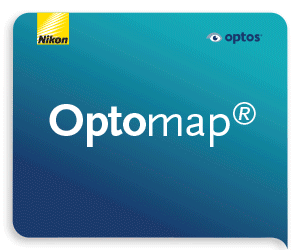Tariffs: three ways to protect your small business’ margins
When it comes to global trade, ‘tariffs’ is the word currently on everyone's lips. Tariffs can cause unexpected shifts overnight and impact your costs, supply chain and ability to stay competitive. While these shifts present challenges, they also create opportunities to improve profitability. With the right strategies, tools and financial partners, businesses can adapt quickly and stay resilient through global economic uncertainty.
From 5 April 2025, the US Government imposed a baseline 10% tariff on most Kiwi goods being imported into the States. In this article, we’ll cover what tariffs are, how they impact consumer prices and the challenges they pose to small businesses. We’ll also explore strategies to mitigate the impact of tariffs, so you can protect your bottom line.
What are tariffs?
Tariffs are government-imposed taxes on imported goods, making them more expensive than a similar domestic product. Governments usually impose tariffs to raise import revenue, protect domestic industries from foreign competition or gain leverage in trade negotiations.
For example, the US' recent tariff changes aim to steer US consumers and businesses towards domestic products. This protective stance isn't unique to the US, as many other countries employ tariffs to protect local industries, preserving jobs and economic stability.
When a government imposes a tariff, the importer of the affected goods is responsible for paying it. However, this cost can often be passed on to the exporter or the end consumers in the form of higher prices.
How do tariffs affect prices?
Tariffs raise import costs and put pressure on your margins. Some businesses may choose to absorb these costs to maintain competitive pricing, but this comes at the cost of reduced margins. Large corporations often have the financial cushion to manage these costs, but small and medium-sized businesses need more strategic solutions.
If a small business chooses to pass on costs to their customers in the form of higher retail prices, it may end up losing price-sensitive customers. When customers find themselves paying more for the same products, it can reduce their confidence and loyalty to the business.
Tariffs can also spark a cycle of escalating costs and prices. When one country imposes tariffs on another country’s imports, the affected country may retaliate with its own tariffs, resulting in a trade war. Not only does it become more expensive for you to import goods, it also becomes more challenging for your products to remain price-competitive in high-tariff markets.
How tariffs impact small businesses
Small businesses often operate with tighter margins and less pricing flexibility, making them more vulnerable to tariff increases. Unlike larger corporations, smaller businesses may lack the scale, supplier diversification or financial reserves to absorb higher costs – or to negotiate better terms with vendors.
In sectors like retail, where margins are already narrow, steep tariffs can force smaller businesses to raise prices beyond what customers are willing to pay – potentially pricing themselves out of the market. For example, recent US tariffs on Chinese imports have raised costs across a broad range of categories, including electronics, consumer goods and industrial components. These added costs can lead to higher shelf prices and intensify competition among local players.
Supply chain disruptions
Tariffs can disrupt the global supply chain, making it more difficult for you or your suppliers to get the goods you need. New tariffs can cause delays at customs, changes in shipping routes or even supplier exits from certain markets. If this happens, you may have to find new suppliers quickly and you could end up with longer lead times and higher costs.
While large businesses can often shift their sourcing or negotiate better terms with suppliers, small businesses with less leverage and tighter supply chains may not have these options.
If your government responds to a tariff by implementing a reciprocal tariff on goods from that country, it may make those imports more expensive. Higher import costs could force you to narrow your profit margins, raise customer prices or source new suppliers from low- or no-tariff countries. New Zealand’s prime minister Christopher Luxon had not imposed reciprocal tariffs at the time of writing.
How to mitigate the impact of tariffs
Let’s look at how you can keep foreign exchange (FX) costs low when managing multi-currency transactions, source goods from suppliers cost-effectively and boost your competitiveness in a higher-tariff economy.
- Reduce currency risk with multi-currency accounts
Widespread tariffs can cause trade tensions to arise and currency fluctuations to become volatile. Managing multi-currency transactions means dealing with frequent currency conversions, whose fees can add up quickly. Unfavourable FX rate movements can make conversions more expensive, further eroding your margins.
A financial provider offering multi-currency accounts can help you manage currency risk and reduce FX costs. When you receive, hold and settle payments in the same currency, you eliminate unnecessary currency conversions altogether.
For example, if you earn revenue and pay suppliers in euros, you can receive and hold these funds in a euro account, then pay your suppliers directly with the same funds. This like-for-like settlement eliminates forced conversions, protects your margins from exchange rate fluctuations and simplifies your international payments.
To further reduce FX risk, consider strategies to lock-in FX rates and limit your exposure to market volatility. Airwallex is launching Scheduled Conversions – a feature that lets you book currency conversions up to 90 days in advance with a confirmed FX rate. You can secure your FX rate by prepaying just 5–10% of the total conversion amount, providing cost certainty for your upcoming transfer without a full conversion upfront.
- Source from suppliers in low- or no-tariff markets
Sourcing from low- or no-tariff markets is a direct way to avoid higher import costs. If switching suppliers entirely isn’t feasible, consider diversifying your supplier base across different markets. This approach spreads your exposure to tariff risk and builds a more flexible, resilient supply chain.
Switching or setting up new suppliers across borders can be complex, having to navigate contracts, timelines and regulatory requirements. Making international transfers can add to the complexity if there are delays, high fees and multiple intermediaries slowing things down.
Choosing the right payment solution can simplify the process while keeping costs low. Look for a payment provider which lets you pay suppliers, like a local business, using local payment rails. This way, you save on international transfer fees, skip costly intermediaries and settle payments quickly. Timely supplier payments can strengthen supplier relationships and keep shipments on track.
Some modern fintech solutions also offer business debit cards linked to multi-currency wallets, with no international fees. You can use these cards to pay international suppliers in their local currencies, avoiding the high fees that some local banks charge.

Regina Lim is a business finance writer working with Airwallex, a leading financial platform offering end-to-end solutions that power the full money movement lifecycle for global businesses – from treasury to payments, FX, transfers, spend management and more. Find out more here.


























